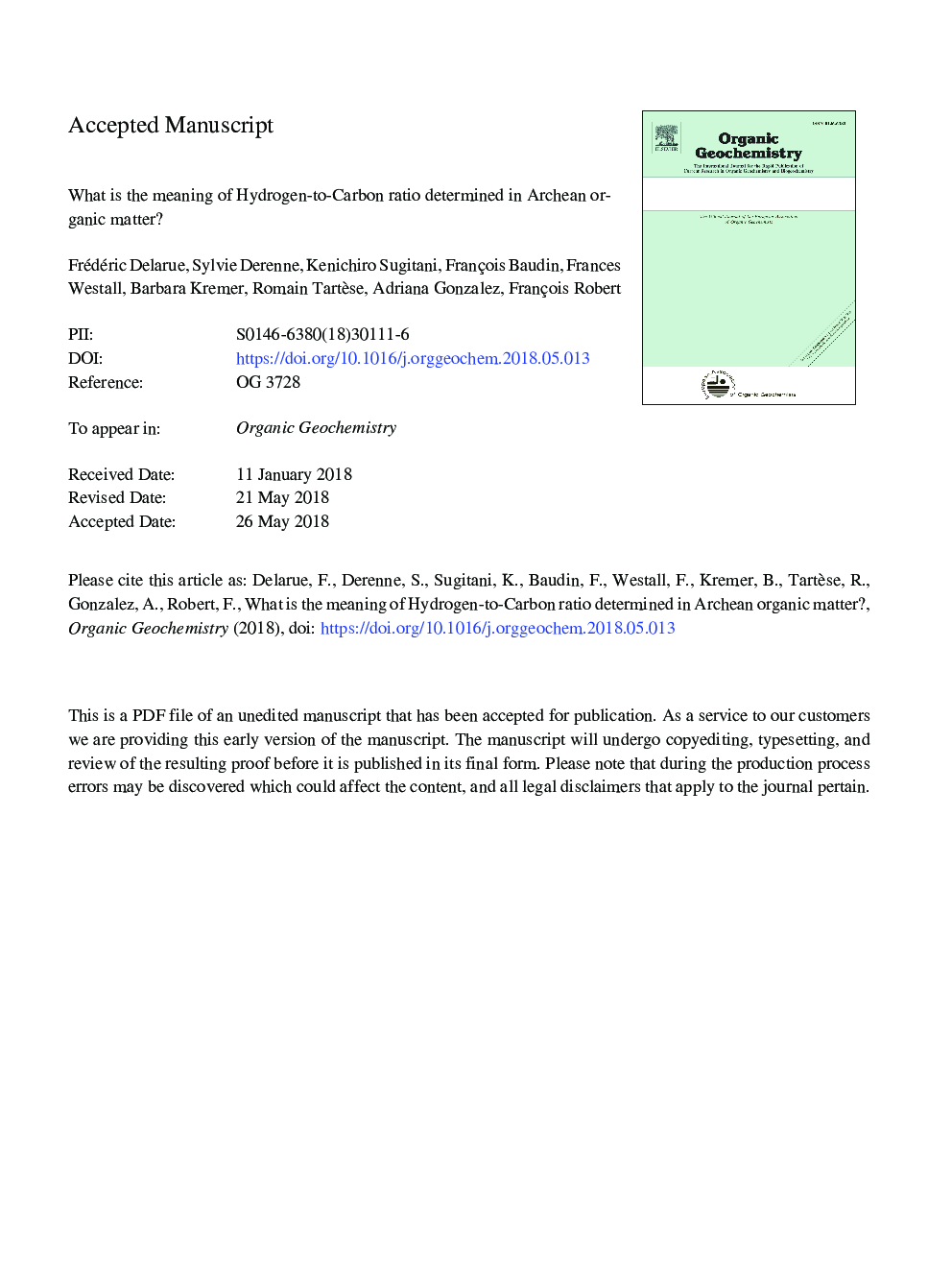| Article ID | Journal | Published Year | Pages | File Type |
|---|---|---|---|---|
| 7816901 | Organic Geochemistry | 2018 | 44 Pages |
Abstract
The search for hydrocarbon molecular biomarkers in Archean metasediments is of prime importance for deciphering the early evolution of life. Suitable criteria are required to identify promising targets for further molecular biomarkers. Possible criteria include the Hydrogen-to-Carbon (H/C) atomic ratio used as a proxy of the aliphatic content of the kerogen matrix. However, H/C ratio values exhibit large variation in Archean kerogens and their significance remains poorly understood. In this study, we thus investigate the significance of the H/C ratios of Archean kerogens by combining elemental analyses, Nanoscale Secondary Ion Mass Spectrometry (NanoSIMS), Rock-Eval pyrolysis and Raman spectroscopy. First, NanoSIMS investigations show the H/C ratio of kerogen can be compromised by residual minerals. In addition, Rock-Eval pyrolysis underlines the fact that thermal cracking of Archean kerogens does not just release hydrocarbon covalently linked to the macromolecular network but also a complex mixture of organic pools distinguished by their thermal maturity. Therefore, the H/C ratio alone cannot be used to probe the preservation of aliphatic compounds bound to kerogen since it can be biased by the presence of (i) residual bitumen, as well as (ii) refractory organic matter in secondary hydrothermal veins whose syngenecity is debatable. Rock-Eval pyrolysis then provides a useful and complementary method to check the significance of H/C atomic ratio as a proxy for hydrocarbon preservation in Archean kerogens.
Related Topics
Physical Sciences and Engineering
Chemistry
Organic Chemistry
Authors
Frédéric Delarue, Sylvie Derenne, Kenichiro Sugitani, François Baudin, Frances Westall, Barbara Kremer, Romain Tartèse, Adriana Gonzalez, François Robert,
